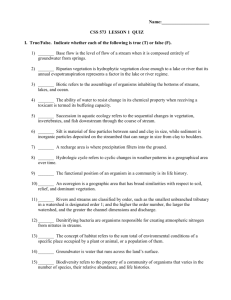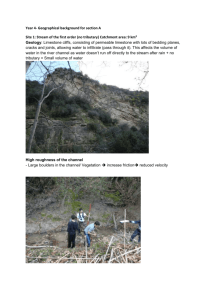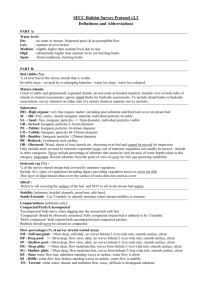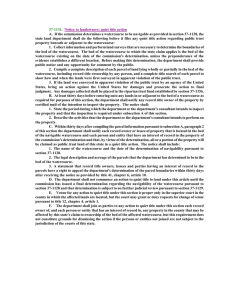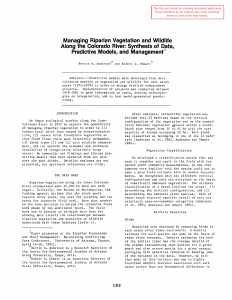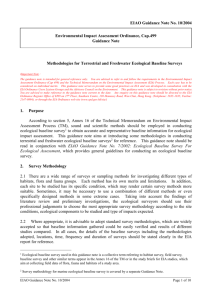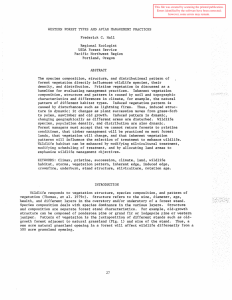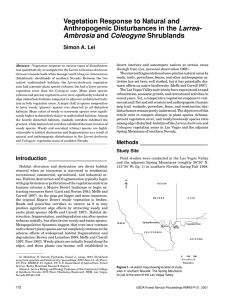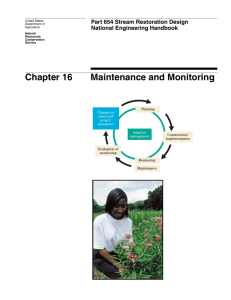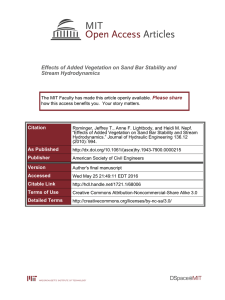Conservation - East Harling Internal Drainage Board
advertisement
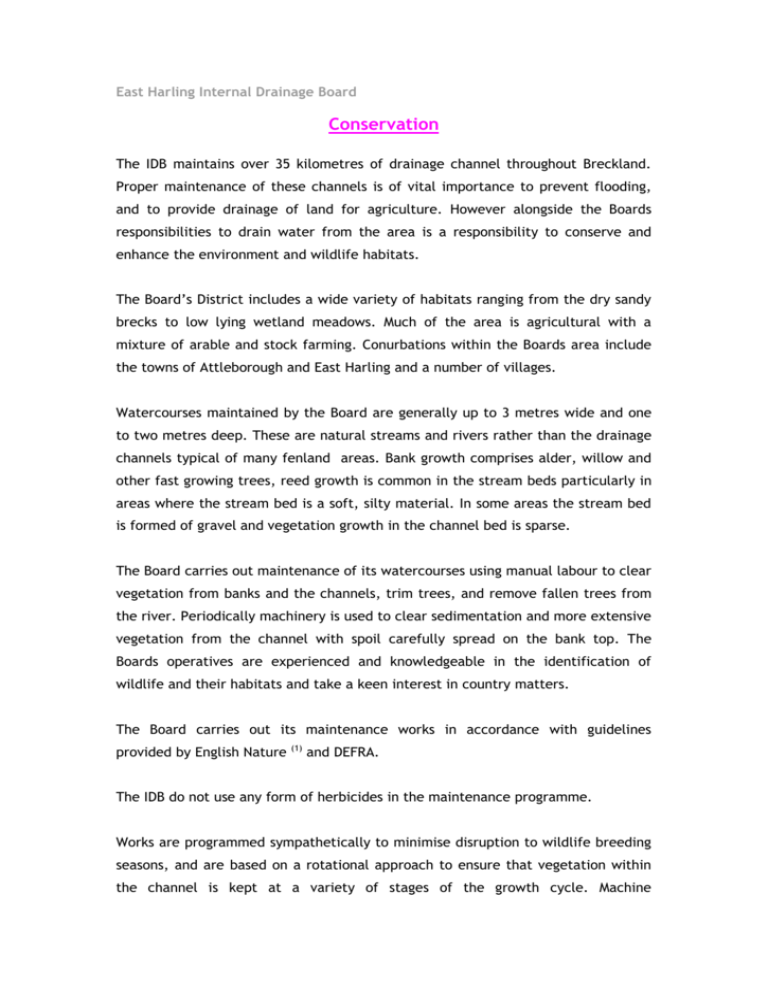
East Harling Internal Drainage Board Conservation The IDB maintains over 35 kilometres of drainage channel throughout Breckland. Proper maintenance of these channels is of vital importance to prevent flooding, and to provide drainage of land for agriculture. However alongside the Boards responsibilities to drain water from the area is a responsibility to conserve and enhance the environment and wildlife habitats. The Board’s District includes a wide variety of habitats ranging from the dry sandy brecks to low lying wetland meadows. Much of the area is agricultural with a mixture of arable and stock farming. Conurbations within the Boards area include the towns of Attleborough and East Harling and a number of villages. Watercourses maintained by the Board are generally up to 3 metres wide and one to two metres deep. These are natural streams and rivers rather than the drainage channels typical of many fenland areas. Bank growth comprises alder, willow and other fast growing trees, reed growth is common in the stream beds particularly in areas where the stream bed is a soft, silty material. In some areas the stream bed is formed of gravel and vegetation growth in the channel bed is sparse. The Board carries out maintenance of its watercourses using manual labour to clear vegetation from banks and the channels, trim trees, and remove fallen trees from the river. Periodically machinery is used to clear sedimentation and more extensive vegetation from the channel with spoil carefully spread on the bank top. The Boards operatives are experienced and knowledgeable in the identification of wildlife and their habitats and take a keen interest in country matters. The Board carries out its maintenance works in accordance with guidelines provided by English Nature (1) and DEFRA. The IDB do not use any form of herbicides in the maintenance programme. Works are programmed sympathetically to minimise disruption to wildlife breeding seasons, and are based on a rotational approach to ensure that vegetation within the channel is kept at a variety of stages of the growth cycle. Machine maintenance is normally restricted to the stream bed with the banks left untouched. Where possible a vegetation margin is left along the edges of the watercourse. Many channels are only maintained on a five or ten yearly basis whilst others may require annual manual clearing and perhaps bi-annual machine clearing. Machine clearing is generally carried out using a weed rake rather than a bucket thus leaving much of the stream bed intact and preventing over-deepening of the channel. Manual maintenance is carried out using powered hand tools and traditional cutting tools. Cut vegetation is removed from the channel and either burnt on the bank top, or stacked on the bank top to provide cover for wildlife. Tree trimming is carried out when necessary. Tree growth provides shade to the watercourse and restricts vegetation growth, however excessive tree shading results in insufficient growth on the banks and inhibits wildlife. Tree trimming is carried out where necessary to allow machine access for maintenance, and to prevent branches falling into the channel. Pollarding is carried out in preference to removal of trees. Tree roots provide an essential part of maintaining bank stability, removing roots will often result in banks collapsing. The Board’s policy on watercourse maintenance has resulted in a continued improvement in water quality and enhanced habitats.


